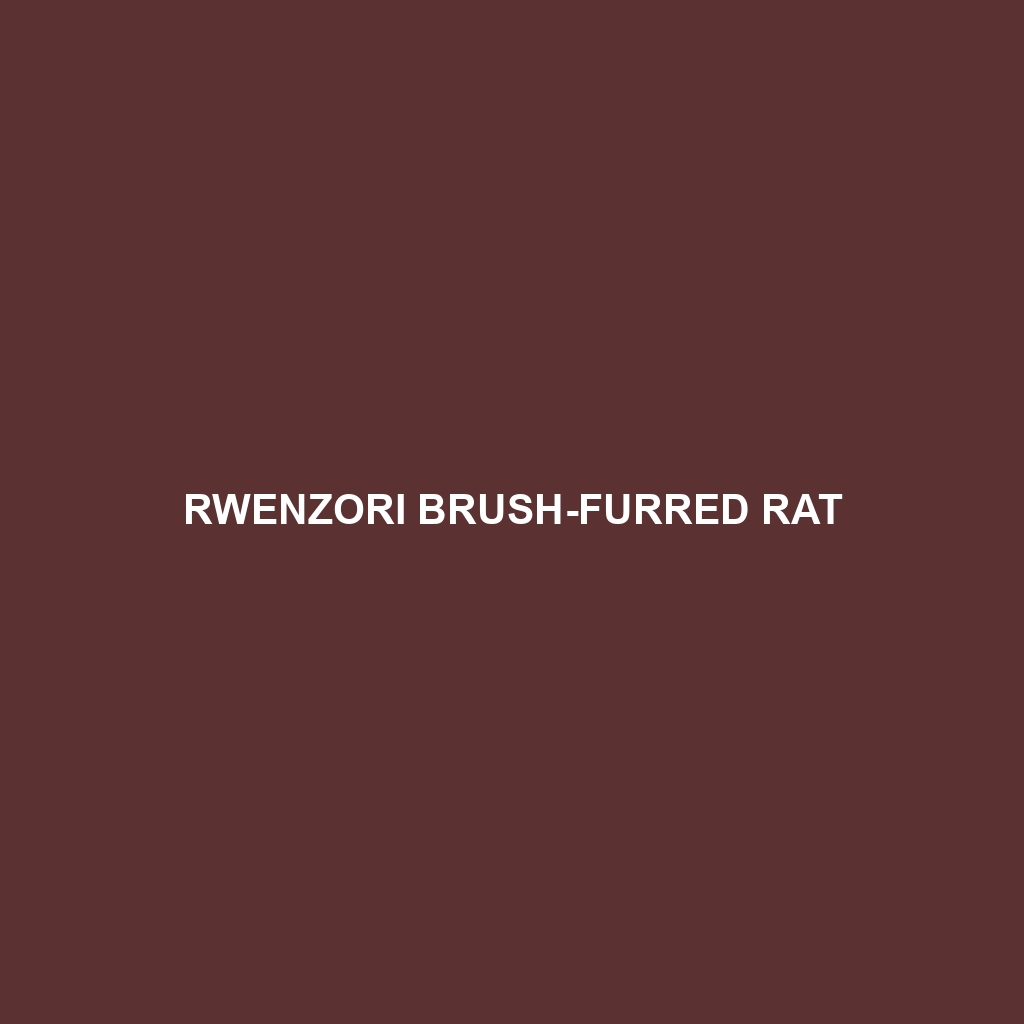Rwenzori Brush-furred Rat
Common Name: Rwenzori Brush-furred Rat
Scientific Name: Dasymys ruwenzori
Habitat: The Rwenzori Brush-furred Rat is primarily found in the mountainous regions of the Rwenzori Mountains in East Africa, specifically in Uganda and the Democratic Republic of the Congo. This species thrives in high-altitude grasslands, alpine meadows, and dense shrublands, often in areas with abundant moisture and vegetation. Its preferred habitat is typically at elevations between 2,000 and 4,000 meters, where the environmental conditions support its survival.
Physical Characteristics: The Rwenzori Brush-furred Rat is a medium-sized rodent, averaging between 20 to 30 centimeters in body length, and weighing approximately 200 to 500 grams. Its fur is characterized by a soft, dense texture that tends to be dark brown or grayish in color, with lighter undersides. Notable features include large, rounded ears and a long, bushy tail that aids in balance and agility. Its strong hind limbs are well-adapted for jumping through dense vegetation.
Behavior: This rodent is primarily nocturnal, exhibiting crepuscular habits during dawn and dusk to avoid daytime predators. The Rwenzori Brush-furred Rat is known for its agile movement through the underbrush as well as its propensity for burrowing and creating nests in dense vegetation. Socially, it can be found in small family groups and is considered a territorial species, marking its territory with scent markings.
Diet: The diet of the Rwenzori Brush-furred Rat primarily consists of a variety of grasses, herbs, seeds, and fruits. This rodent is an opportunistic feeder and plays an important role in seed dispersal within its high-altitude ecosystem. During times of food scarcity, it may also ingest roots and tubers, adapting its feeding habits to ensure survival in fluctuating environmental conditions.
Reproduction: The Rwenzori Brush-furred Rat breeds year-round, with increased activity during the wet season. Females typically give birth to one to four offspring per litter after a gestation period of about 30 days. This species demonstrates parental care, with mothers actively grooming and nursing their young until they are capable of foraging on their own, usually around six weeks of age.
Conservation Status: The Rwenzori Brush-furred Rat is classified as vulnerable by the IUCN due to habitat loss caused by agricultural expansion, climate change, and human encroachment. Conservation efforts are crucial to protect its natural habitat and ensure the survival of this unique rodent species.
Interesting Facts: The Rwenzori Brush-furred Rat is not only remarkable for its adaptability to high-altitude environments but also for its role as a food source for local predators, including birds of prey and small mammals. Additionally, this species has a unique ability to withstand cooler temperatures, making it particularly well-suited for life in the Rwenzori Mountains.
Role in Ecosystem: In its ecosystem, the Rwenzori Brush-furred Rat serves as a vital component of the food chain, providing sustenance for various predators. Additionally, its feeding behavior contributes to plant health through seed dispersal, promoting biodiversity in the alpine meadows of the Rwenzori region. This interaction highlights the ecological significance of the species and the importance of its conservation.
